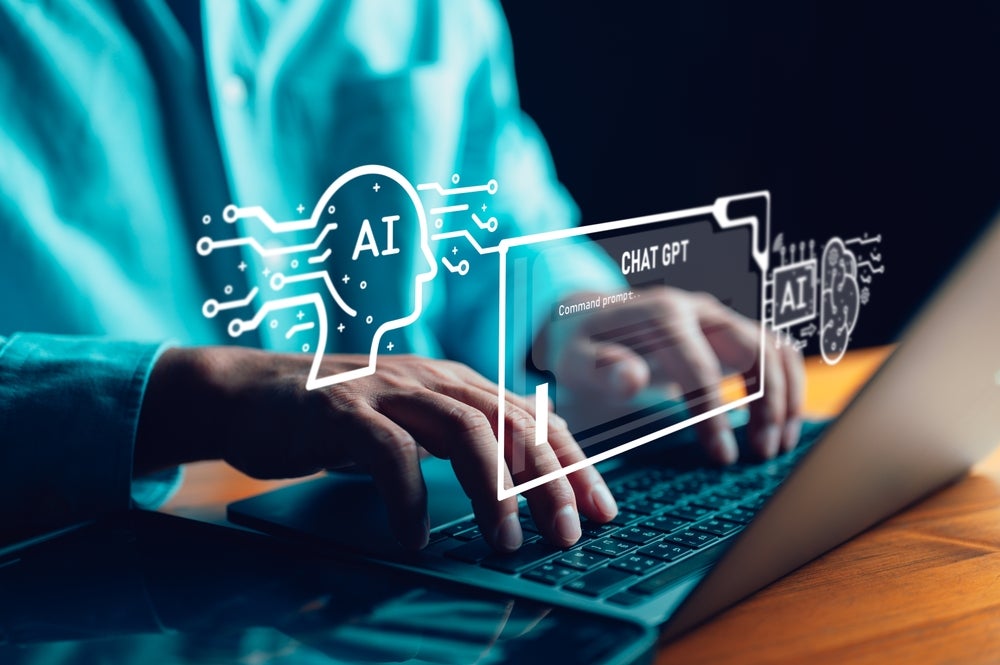
There was commerce, which was then disrupted by e-commerce, now ambient commerce is setting out to challenge e-commerce by combining the physical space associated with traditional retail with technology. The term describes a new form of shopping which makes use of sensors coupled with artificial intelligence (AI) to help customers select and pay for their goods without the need for keyboards or cash registers. But what is ambient commerce in business and what is its future?
Ambient commerce is one use case for the Internet of Things (IoT) that offers consumers the promise of a new way to shop. It is the way that Generation Z, a cohort of 2.3 billion digital natives who were born after 1995, will increasingly choose to buy things.

Access deeper industry intelligence
Experience unmatched clarity with a single platform that combines unique data, AI, and human expertise.

Why does ambient commerce matter for business?
With fierce competition from online retailers, traditional retailers urgently need to improve their customer proposition to increase footfall in offline stores, understand customer behaviour a lot better and turn visits to the store or the mall into rich, interactive experiences. They will do this in a variety of ways. For example, virtual reality changing rooms, intelligent concierge services, charming store guide robots such as Softbank’s Pepper, and automated checkout systems that aim to do away with queues. Some of the technologies they deploy will be truly innovative.
Since June 2018, clothing retailer H&M has been trialling a new smart mirror developed with voice and facial recognition from Microsoft.
Contrary to conventional wisdom, while consumers tend to bounce around between online and offline shopping habits along the path to selection and purchase, retail is still predominantly an offline affair when it comes to the final purchase. Even in China, where online activity is by far the most advanced, only 17% of retail sales are completed online.

US Tariffs are shifting - will you react or anticipate?
Don’t let policy changes catch you off guard. Stay proactive with real-time data and expert analysis.
By GlobalDataWhat are the big themes around ambient commerce?
The IoT enables ambient commerce
The IoT comprises arrays of connected ‘things’ with unique identifiers that collect data using sensors and transmit that data over communications networks without human-to-human or human-to-computer interaction. It is already providing an invisible, digital support backdrop for ambient commerce. As the number of sensors and actuators that are deployed within the physical structure of our environment rises, the ability to blend physical and digital experiences expands.
Sensors become pervasive
Over the last decade, passive mechanical-based sensors have been displaced by the rapid emergence of cheap, smart, silicon-based sensors. These new microelectromechanical systems (MEMS) sensors can detect information about, light, motion, proximity, pressure, temperature and radiation. The decline in the cost of these sensors represents a key enabler for ambient commerce, where only a few years ago adding connected temperature sensors to chiller cabinets might have been prohibitively expensive, today it is possible to imagine embedding sensors directly into food packaging. When connected to a communications network, these sensors can transmit the information they gather for analysis in a remote data centre somewhere in the cloud, where it can be analysed.
Amazon Go connected store model
Amazon Go is a new retail concept whereby customers can walk into a supermarket, pick up the groceries they need and walk out without going through a check-out register. Amazon uses a combination of technologies, predominantly computer vision, sensors and machine learning, to keep track of what customers are buying. For instance, pressure sensors detect when an item has been removed from a shelf or returned to it, while customer movements are analysed by cameras and sensors built into the fabric of the retail space. The data is analysed and then transmitted to servers which use machine learning to determine which items customers have placed in their shopping bags. The idea is at the conceptual stage and there are only four Amazon Go stores currently open, in Seattle and Chicago. These stores require significant investment in high-tech equipment, making imminent roll-out on a commercial scale unlikely.
Whilst the Amazon Go store shuns smartphones, China’s connected store model places smartphones at its core, using QR codes to determine what items customers are interested in purchasing. China is leading the world in the development of the new offline, ambient, retail world. Smart shopping in connected stores there will be based on an ‘enter, scan, pay’ model and be equipped with personalised concierge services that give customers product information and discount deals via their smartphone apps.
Scan and Go kiosks
China is also pioneering the development of automated, unmanned, walk-in stores carrying up to 500 grocery items based, again, on smartphones, scanning and automatic payment. These are smart, connected halfway houses between convenience stores and kiosks. They will be autonomous mobile units able to service rural areas as well as city outskirts.
The rise of the internet super-monopoly
The e-commerce world is split between the giant internet ecosystems and the rest. The giants have many advantages, including substantial network effects from the sheer scale of their user-base and distribution capability. Their size means that they are in a strong position to invest in new technologies, allowing them to build on their already dominant positions.
Conversational platforms
Voice is the next big computing platform. It could, at some point, replace keyboards and touchscreens. Since 2014, Amazon customers have been able to place orders for music and other goods just by speaking to Echo, a smart speaker powered by the Alexa virtual assistant. A number of companies have followed Amazon’s lead and developed smart speakers of their own, including Google, Apple, and Alibaba. By the end of 2018, many branded manufacturers will have introduced a range of conversational machines and apps. By 2020, 50% of online searches will be conducted by voice, compared to 20% in 2017. Natural language processing (NLP) systems, like the new breed of facial recognition systems, will begin to recognise emotion and learn to fully engage and have meaningful conversations. These voice-enabled digital assistants will have a huge advantage in the ambient commerce market for two reasons: their platforms are gathering vast troves of data on their customer’s preferences by hearing their conversations, and consumers are increasingly likely to make purchase decisions using their voice.
Virtual and augmented reality
One of the most compelling use cases for virtual reality (VR) and augmented reality (AR) is e-commerce and ambient commerce. For example, IKEA has experimented with augmented reality headsets that allow customers to take the furniture from its catalogue and place it in front of them in their room to see what it looks like. Other retailers are experimenting with VR apps which can take their customers on a tour of their stores, while H&M is using AR in its voice interactive mirror at its flagship Times Square store in New York. AR will be hugely disruptive because, ultimately, AR glasses or contact lenses with voice activation and AI will displace the smartphone as the consumer’s main user digital interface.
Tackling the cyber threat
If anything can stall the growth of IoT and ambient commerce it is cyber insecurity. The arrival of ambient commerce simply extends the attack surface for hackers. Even such tech-savvy companies as Apple, Sony, Netflix and Yahoo have repeatedly been exposed for their inability to avoid major cyberattacks.
What is the history of ambient commerce?
The emergence of cheap, smart sensors from 2010 has been a tipping point on the journey to ambient computing in general, and ambient commerce in particular.
The 2015 launch of Amazon’s Echo, a smart speaker powered by Alexa, Amazon’s own virtual assistant, built on the example set by Apple’s Siri, which was the first mainstream conversational platform.
Ambient commerce’s first real step into the limelight came with the opening of the first Amazon Go store in Seattle in 2018, followed by three others shortly afterwards, as well as the launch of Alibaba’s ‘New Retail’ stores under its Hema brand in China.
Also in 2018, Walmart has teamed up with Microsoft and JD.com with Google in a bid to create ambient commerce platforms of their own.
By 2025 we see a world full of sentient, intelligent and conversational platforms whose main consumers will be members of the 2.3 billion strong Generation Z, a subset of the Millennials who were born digital natives.
What is the story of ambient commerce?
- 1990: Sunbeam toaster controlled via the internet at Interop Networking Conference.
- 1993: US Government allows civilians to use GPS.
- 1996: GM releases Onstar Service.
- 1998: Mark Weiser builds water foundation synced to stock market movements.
- 1999: Kevin Ashton of P&G coins the term, Internet of Things.
- 2000: LG launches first IoT fridge.
- 2007: Fitbit launched.
- 2009: Google starts testing robo-car, converted Prius, on Californian highways.
- 2009: St Jude Medical introduces wireless pacemaker with remote monitoring
- 2010: Sensor prices start to drop.
- 2014: Number of mobile devices exceed world population.
- 2015: Amazon releases Echo/Alexa.
- 2015: Samsung acquires SmartThings.
- 2016: Google’s AlphaGo beats world Go champion highlighting the scope of deep learning.
- 2017: Veteran tech columnist Walt Mossberg forecasts that ambient computing is the next big thing.
- 2017: Suning launches its Biu scan-and-go stores.
- 2018: Amazon opens ‘Go’ store in Seattle.
- 2018: Google launches Google Home to compete with Amazon Alexa.
- 2018: Alibaba launches ‘New Retail’ with its Hema stores.
- 2018: Walmart teams up with Microsoft to upgrade its stores.
- 2018: JD.com teams up with Google to create an IoT platform.
- 2019: Ambient computing and commerce to enter the media and Wall Street vocabularies.
- 2020: Intel forecasts 200 billion connected devices vs Cisco’s 50 billion.
- 2021: BMW, GM, Volvo join Tesla in offering fully autonomous vehicles.
- 2025: World will have filled up with sentient, intelligent and conversational human backdrops.
- 2025: The Hashtag Generation, Generation Z will be the spearhead consumers.
This article was produced in association with GlobalData Thematic research. More details here about how to access in-depth reports and detailed thematic scorecard rankings.







